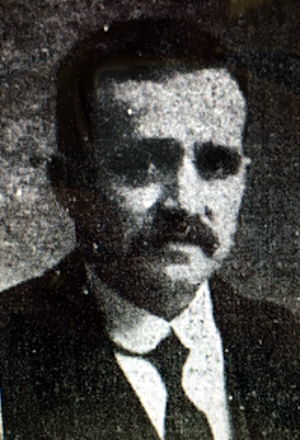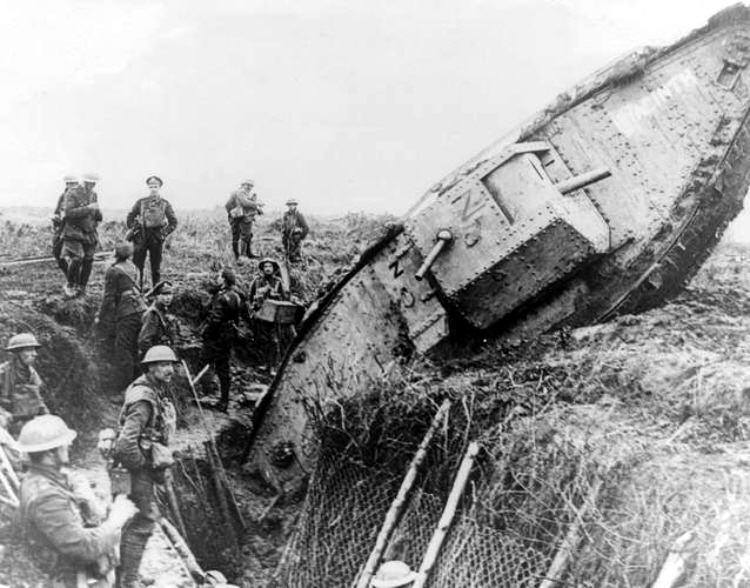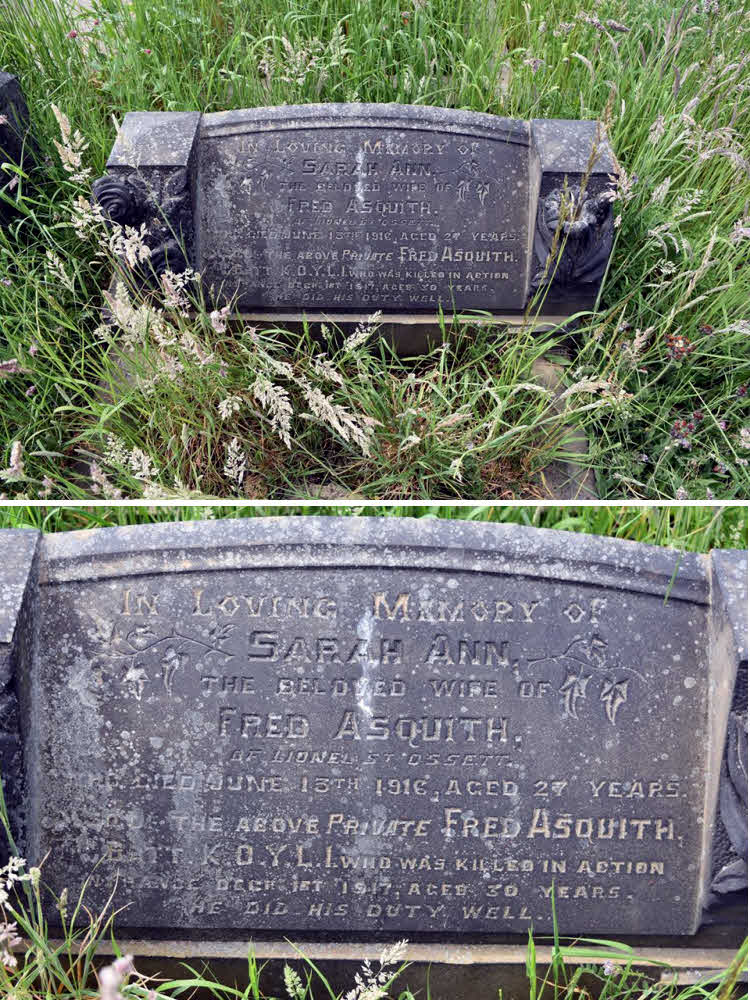
Fred Asquith was born in Netherton in spring 1886 and baptised at Middlestown, St Luke’s church on 24th July 1887. Fred was the seventh of ten children born to blacksmith Cain Asquith and his wife Frances Hemingway who married at St. Mary’s Church, Mirfield on 3rd March 1877. The couple lost their first two children in infancy.
By 1891 Cain Asquith, his wife Frances and six of their children, including Fred, aged four years, were living at New Scarbro, Netherton. Cain was working as a blacksmith, but sadly he died in May 1892, aged 35 years when Fred was just five years of age. Widow Frances Asquith, 35 years of age, was left with eight surviving children all aged 12 years and under; the final child from the marriage, Ada, was born just seven months before Cain’s death. Another child, Lucy Asquith, was born in 1895, four years after Cain’s death.
Widow Frances Asquith had her lost her third child in infancy in 1894 and sometime between 1895 and 1901 she moved to Cross Park Street Horbury where she was living with her seven surviving children, including Fred, aged 13 years and working as a silk weigher. Later in 1901 Frances married widower Joah Bentley Davison and the couple had a son in 1902.
By 1911 Frances and her second husband, Joah, a council worker, were living at Ivy Terrace, Northgate, Horbury with five children from Frances’ first marriage, being four daughters and Fred, two daughters from Joah’s first marriage and a son from the marriage between Frances and Joah. Eight children ranging in age between 8 and 27 years.
On 3rd June 1911 Fred Asquith married Sarah Ann Normington at Mount Zion Primitive Methodist Chapel, Ossett Green. At the date of their marriage Fred, was a 23 year old woollen weaver living at Ivy Cottage, Northgate, Horbury whilst Sarah Ann, aged 21 years was a rag sorter, residing at 18 Dewsbury Road, Ossett.
By 1914 Fred was living with Sarah Ann at Runtlings Lane Ossett and sometime later moved to Lionel Street. Then war was declared. The couple had a child, Frances Mary born on 2nd June 1916. Sadly Sarah Anne died on 13th June 1916 suggesting complications with the birth which might have been the cause of her death.
It is known that Fred Asquith enlisted at Ossett and joined the army in June 1916. It seems certain that he knew by this time that his wife had died and that he would need to make arrangements for the care of his new born child. In the first instance he appears to have been attached to the 10th battalion of the King’s Own Yorkshire Light Infantry (KOYLI). He embarked for France in late 1917 having been transferred to 7th battalion KOYLI with whom he was serving at the time he lost his life on 1st December 1917.
The 7th KOYLI came under the command of 61st Brigade in 20th (Light) Division which took part in the Battle of Cambrai between 20th November and 7th December 1917. At dawn on 20 November 1917, the British Third Army launched an attack towards Cambrai. The assault utilised the largest number of tanks yet assembled. It used an artillery barrage that was not previously registered, aiming to return an element of surprise to the battlefield. But ultimately, early British gains were largely retaken by German counter-attacks.

Above: British Mark iV tank during the battle on the 20th November 1917.
The attack began with significant gains on the opening day through a combination of effective artillery fire, infantry tactics and tanks. British forces made advances of around 5 miles, taking a number of villages. But by the end of the first day, over half of the tanks were out of action.
As the battle continued, British progress slowed amidst intense fighting. By 28 November the British had reached a position on the crest of Bourlon Ridge, where they held a salient. Two days later, on 30th November 1917, German forces launched a counter-offensive, utilising intensive artillery fire and infantry tactics that made use of infiltrating “storm” troops.
“Early in the morning of the 30th November the enemy brought a heavy barrage to bear on the front line posts. At about 8 a.m. the S.O.S. signal went up from our front line. A strong attack followed the barrage and both the battalions in our front line were surrounded and almost completely wiped out. A few men managed to trickle back to our support line. Very soon the enemy reached the support line, and the remnants fell back and came into line on the right of the reserve line. Every available man was rushed up which was exposed and the reserve line managed to hold firm. The advance was checked. The situation, however, was full of danger.
The 7th KOYLI took up a new line on the right flank. The men were now thoroughly weary and practically every man had to be in the trenches to hold it. Throughout the night they worked at strengthening the position” 1
During the course of this action Private Fred Asquith was killed in action on 1st December 1917.
Later in December 1917 the “Ossett Observer” carried the following obituary for Private Asquith:
HORBURY SOLDIER KILLED IN ACTION
“Private Fred Asquith (30) of the KOYLI who was well known in Horbury, where he was brought up, and at South Ossett, where he had lived for a few years, is officially reported to have been killed in action on the Western Front on December 1st. The official notification of his death was received during the week at a house in Lionel-street, Station-road, Ossett, where he formerly resided with his wife, who died some time ago.
Private Asquith has been employed for many years as foreman warper and beamer at Manor Mill, South Ossett and before his marriage and after his wife’s death he resided with his parents at 2 Ivy-terrace, Northgate, Horbury.
He joined the army in June last year and went out to France only a few weeks ago”
Private Fred Asquith was posthumously awarded the British and Victory Medals for service overseas in a theatre of war. He is remembered on Panel 8 of the Cambrai Memorial, Louverval. The memorial lists the 7,048 missing soldiers of the United Kingdom and South Africa who died at the Battle of Cambrai and have no known graves.
Meanwhile, back in Ossett, the orphaned child, Frances Mary Asquith, had lost both her mother and father by the time she was barely eighteen months of age. In the first instance she appears to have been cared for by Fred’s mother, by that time, Mrs J. Davison who lived at Ivy Cottage, Horbury. Sometime later Frances Mary was living with her late mother’s parents, Mr and Mrs L. Normington of 18 Dewsbury Road Ossett.
In July 1918, Frances Mary was awarded a pension at the “motherless rate” of 10/- p.w.until her sixteenth birthday in June 1932. By 1939 Frances Mary Asquith was a patient at Rawcliffe Hall Hospital, situated at Rawcliffe, near Goole, and a converted private mansion, opened in c.1921 by the West Riding County Council as a mental deficiency hospital for women patients. Rawcliffe Hall was demolished in the mid 1990s.
Frances Mary Asquith of Dovecote Lodge died on 11th November 1996 and was buried at Horbury Cemetery Horbury (Section I no. 103) on 18th November 1996. Frances Mary was 80 years of age and died on the 78th anniversary of the signing of the Armistice. It is the intention to have Fred Asquith’s name engraved at the Ossett War Memorial alongside the other men and women of The Ossett Fallen. Thanks are due to Lisa Jennings for bringing Private Fred Asquith to our attention.

Above: The Asquith grave at St. John’s Methodist Chapel showing the memorial to Fred Asquith, husband of Sarah Ann Asquith. Picture courtesy of Lisa Jennings.
References:
1. History of The King’s Own Yorkshire Light Infantry in the Great War. By Lt.-Col. Reginald C. Bond, D.S.O.